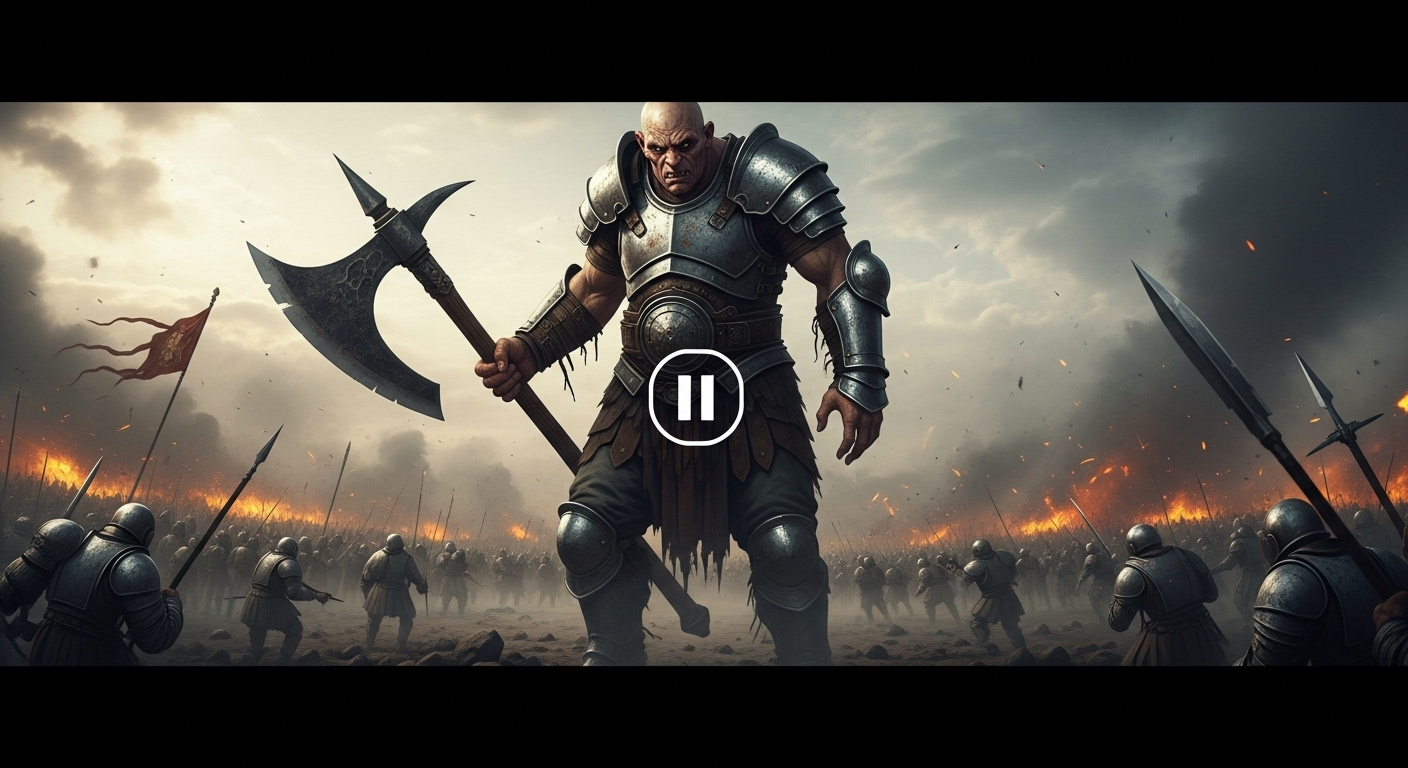

Tooba Siddiqui
Wed Aug 27 2025
7 mins Read
Kling AI dominated the AI video generation realm with its latest version, featuring higher resolution and improved motion realism. A few days back, Kling announced a major update. Although it was expected and predicted, this update has further refined the video generation results with complete creative control and no morphing. Kling 2.1 Start & End Frames allows users to play the director. You get to decide the starting scene, jot down transitions, adjust the camera angles and thematic requirements, concoct the climax, and pick your own ending. Kling AI has redefined what AI video generators are truly capable of — a revolution within.
What is Kling 2.1 Start & End Frames?
AI video generation altered the human perception of video creation, with a simple text prompt and multiple aspects and models. However, it lacked human control — and to some extent, creativity. One could only explain so much through words at times; you need visuals to present your ideas — and what better way than pairing the capabilities of image-to-video and text-to-video generation.
However, Kling 2.1 did this with a slight twist. In order to enable users to direct videos without editing prompts or regenerating multiple times, Kling AI introduced the flexibility of the Start & End Frames feature. It allows users to upload images for the first and last frames of their videos, all while explaining the transition through detailed prompting. This not only improves Kling AI image-to-video generation but also transforms the video sequencing approach. Users get to have more control over the narrative flow and video generation. Be it a product ad, tutorial, or animated series, this new Kling AI video generator will have a significant impact on viewing experience and user engagement.
Features & What's New in Kling 2.1 Start & End Frames
Kling AI Start & End Frames is an improvement backed by technical upgrades and changes. It is an innovative customization option with a greater degree of creative control. Here’s what has improved in the Kling AI video generator:
1. More Creative Control
The Start Frame determines the beginning of your video, while the End Frame sets the conclusion. Kling 2.1 allows you to decide the ending and beginning, with complete creative liberty to dictate the transition between scenes. Such control ensures coherence in the AI video narrative and seamless transition/flow.
2. Pace Control
Once you have the start and end frames, you can adjust the overall pace of the video narrative. Through detailed prompting, you can slow down or speed up the transitions to control the mood and message of the AI video. You can add dramatic camera angles in between scenes and end the video at a softer tone and pace, creating a sense of calm.
3. Transitional Control
Smoother and more seamless transitions are a crucial part of this upgraded Kling AI video generator. It allows the users to eliminate sudden cuts and awkward shifts in scenes for a smoother motion. Coupled with Kling AI motion realism and scenic consistency, it provides users with ultra-realistic and polished video output.
4. Frame Control
With Kling 2.1 Start & End frame, you get to control, change, and even re-do the entire frame if it doesn’t meet your expectations. It means users aren’t at the mercy of unpredictability and misinterpretation of AI video generators. Termed also as ‘cinematic control,’ the upgrade allows you to set timing, adjust elements, or focus on certain details throughout the sequence.
How to Use Kling 2.1 Start & End Frames
The interface is quite easy to understand, making usage simpler. However, it does require experimenting and doing some trials to better understand the capabilities of the updated Kling AI video generator. Here’s how you can start with Kling 2.1:
Prompting for Start & End Frames
- Upload the Start and End frames. Make sure the two images are consistent in color palette, tone, and settings. This helps in smoother transitions and polished output.
- Now, enter a prompt describing the transitions you want to include in the video. Make sure the prompt entails the starting scene, the actions and camera motions, the climax scene, and the ending. The more detailed the prompt, the smoother the transitions. For instance, you might describe a scene as follows: A person walking through a forest with sunlight streaming through the trees, camera pans as they walk, ending with a close-up of their face, with sunlight reflected in their eyes. You can use the Kling AI built-in DeepSeek feature to generate different variations of your prompt or any other LLM to improve your prompt.
- Once you have uploaded the starting frame, make sure to mention it clearly in your prompt and specify how the starting scene will unfold. Describe the camera movement and angle, lightning, character pose, subject/object movement — make it as descriptive as you can. For example, the camera starts behind the person, zooming in as they walk forward.
- After defining the starting frame, include all the transitions and describe the ending frame. Include visual effects, lightning changes, camera motion, and character positioning to ensure the ending scene remains crisp and sharp. For example: End with a close-up of the person’s face, camera focusing on the eyes, with soft sunlight glowing on their face.
- Generate your video after entering the prompt. Kling AI video generator offers integrated audio and built-in sync SFX.
Use Cases for Kling 2.1 Start & End Frames
1. Creative Storytelling & Ads
When it comes to advertising, the quality of video content determines the worth of the advertised product. With Kling 2.1 Start & End Frames, the video creators and brands get to dictate their product narrative. From adjusting the visual elements to creating a compelling hook, this will surely transform how marketers and brands approach advertising content.
2. Product Demo
Product launch and demonstration videos require high-quality product images, feature highlights, and seamless transitions for better user engagement. With Kling 2.1, the marketers and creators can upload the opening frame, add and position features in the prompt, and end by uploading the final shot. This allows you to ideate and create professionally done product videos.
3. Educational Content
Informational videos often require a well-defined structure and tone. With Kling 2.1 Start & End frame, the content creators can create visually coherent concept videos, all while ensuring the narrative flows smoothly. It is helpful for online tutorial videos, courses, and guides for complex concepts — all of which need clarity and visual consistency.
4. Entertainment Content
Entertainment content creators can produce high-quality videos for their short film or any animated/fiction series. You can create multiple videos using Kling 2.1 Start & End frame and stitch them together to create a final product. This upgrade allows users to control the pace of the entire film, all while keeping the emotional impact intact.
Pros and Cons of Kling 2.1 Start & End Frames
Pros:
- Kling 2.1 Start & End frame allows greater creative control, ensuring the narrative flows as per the user's expectations.
- The artistic liberty that comes with control over the start and end frames helps the user visualize and replicate whatever they have envisioned. This is literally traditional video/film production powered by AI. The camera, lighting equipment, and devices are now simple text prompts.
- Kling 2.1 offers better video results with no morphing, sudden changes, or cuts, improving the overall viewing quality and experience.
- It is ideal for marketing professionals and businesses. Kling 2.1 can be used to generate adverts, product demos, and branded content that stands out with seamless start and end frames.
Cons:
For someone new to Kling AI video generator, this upgrade might confuse them. Kling A Start & End frame requires thorough prompting with detailed instructions. It requires the users to be precise in their transitions, end and start frames, and other video customizations. Prompt ambiguity might lead to inaccurate results with misplaced frames and visual awkwardness.
Kling 2.1 requires a clear understanding of effective prompting, fine-tuning the start and end frames, and leveraging creative control.
Pricing, Cost, and Credits for Kling AI
The basic plan for using Kling AI is free with no monthly credits and a trial offering upon login. The standard package starts at $79.2/year with 660 credits/month. The pro package is 293/year with 3000 credits/month. The premier package is $728/year with 8000 credits/month. The ultra-pro package is $1429/year with 26000 credits/month. The paid plans include faster generation, image upscaling, video extension, and watermark removal.
Final Thoughts
From camera and filming devices to prompting and customization, from ideas to on-screen films in a few clicks — Kling 2.1 is shifting the dynamics with its upgrade. With Kling AI, video generation will now be a true blend of human creativity with next-level automation and tools.
Frequently Asked Questions
Related reading:
How to Use Kling 2.1 AI Video Generator

Tooba Siddiqui
Tooba Siddiqui is a content marketer with a strong focus on AI trends and product innovation. She explores generative AI with a keen eye. At ImagineArt, she develops marketing content that translates cutting-edge innovation into engaging, search-driven narratives for the right audience.